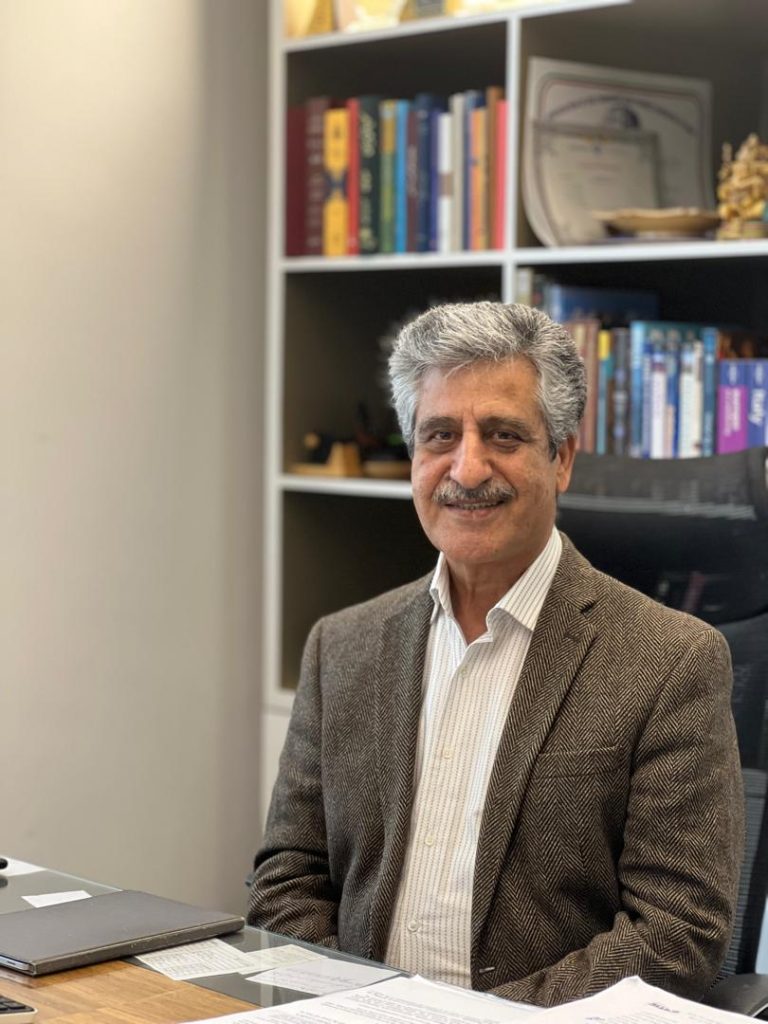Interview with Mostafa Shafiei Shakib, President of the Iranian Tour Operators Society
As this interview will be published in a special issue for the ATF exhibition, could you first explain what the Iranian Tour Operators Society is and in which areas it operates?
The Iranian Tour Operators Society currently has 235 members, with the majority of their activities focused on incoming tours to Iran. However, the current situation in tourism is not favourable, and the tourism industry is facing difficult conditions. We hope this uncertainty will be resolved soon so we can re-establish connections with the world, and the authorities will work to manage and improve the current situation.

Considering that the Society has committees and participates in exhibitions in Turkey, what role can the Society play in the Turkish market, and what is your view of this market?
In past years, our relationship with Turkey has been one-sided. Given Iran’s significant tourism potential, this relationship must become two-sided. Some Iranian Tour Operators Society members attend the MITT exhibition in Istanbul, and our Automobile Touring Club has rented a 100-square-meter booth, aiming to have at least 10-12 agencies participate in this exhibition. Over the past two years, some of our members also participated in exhibitions in Ankara. During a meeting at the TURSAB centre in Istanbul, we attended with 13 members and were introduced to 46 Turkish tour operators. Subsequently, TURSAB introduced us to 123 Turkish tour operators, and we hope favourable conditions will arise for deeper collaboration with Turkish tour operators. We would be happy to promote Iran.
During two trips to Ankara, we met with the Alawites and their board members, and we also invited them to Iran, organizing a familiarization tour of Iran, including the cities of Tabriz, Ardabil, Mashhad, and Tehran. However, the lack of tourism exchanges from Turkey to Iran has several reasons, and we hope that improvements will happen, leading to their presence in Iran.
Currently, most access to Türkiye is by air. Do you think these air connections are sufficient for developing tourism collaborations?
We also have land access, and many Iranians travel to Van via land, a city that has seen considerable growth thanks to the presence of Iranian tourists. An airport has recently been built in Van. We also have road and rail connections with Türkiye, but our air connections are much more extensive. At one point, we had 10 flights a day to Turkey. However, we expect a reciprocal effort from Turkish tour operators to promote travel to Iran, and we hope this one-sided trend will turn into a two-sided relationship.
What is your view on our infrastructure? Do you think Iran’s recreational and accommodation infrastructure offers opportunities for attracting investment from Türkiye?
There are investment opportunities in both the transportation and hospitality sectors. During a trip to the Aras region, TURSAB members were present, and we signed a cooperation agreement with TURSAB. Turkish parties are interested in investing in our border areas, and there are opportunities for them to do so. However, in the transportation and airport sectors, the Ministry of Roads and Urban Development needs to take the lead, which is outside the purview of the Iranian Tour Operators Society, and these sectors need to be updated.
Türkiye, as an Islamic country, is often considered a successful model in attracting a wide variety of tourists with diverse needs. However, this policy is not as widespread in Iran. Do you think this is a reason why Türkiye is more successful in attracting both tourists and investors?
These factors are not as widespread in Iran, stemming from governmental decisions and policies. The World Tourism Organization has defined 93 types of tourism, and we can only offer a limited number of these in Iran as products. Tours such as recreational, religious, cultural, sports, medical, nature, and historical tourism are the dominant forms of tourism in Iran. To offer a wider variety of tours, there needs to be a shift in governmental outlook.
While we can expect that cultural tourists, attracted by cultural similarities between the two countries, might come to Iran, this may not significantly impact the market for travel tours between the two countries. Factors like ease of money transfer and removing certain restrictions could make travelling to Iran much more appealing. Economic stability is also a crucial factor that influences whether tourists choose to travel to a country. While Turkey also faces economic challenges, they have managed to keep their tourism industry afloat despite these difficulties.
We are currently facing crises in the Middle East and conflicts. In both possible scenarios—either worsening or improving conditions—how do you think the governments on both sides should act so that tourism stakeholders in both countries benefit?
In the first scenario, let’s imagine a war breaks out between Iran and Israel, which I hope never happens. In that case, our tourism relationship with Turkey will become entirely one-sided.
However, in the second scenario, where the situation improves, which we all hope for, and peace returns to the region, Iran will need extensive advertising efforts to showcase its rich history, culture, and natural beauty to the world. Our interactions should be such that Iran is presented in the best possible light to the world.
We need to strengthen our friendships with neighbours and countries worldwide more than ever before. The adversarial stance the world currently has towards us needs to change. According to tourists who visit Iran, they have always praised the culture of hospitality in Iran, noting that it is part of our tradition to treat guests as dear and sacred.
